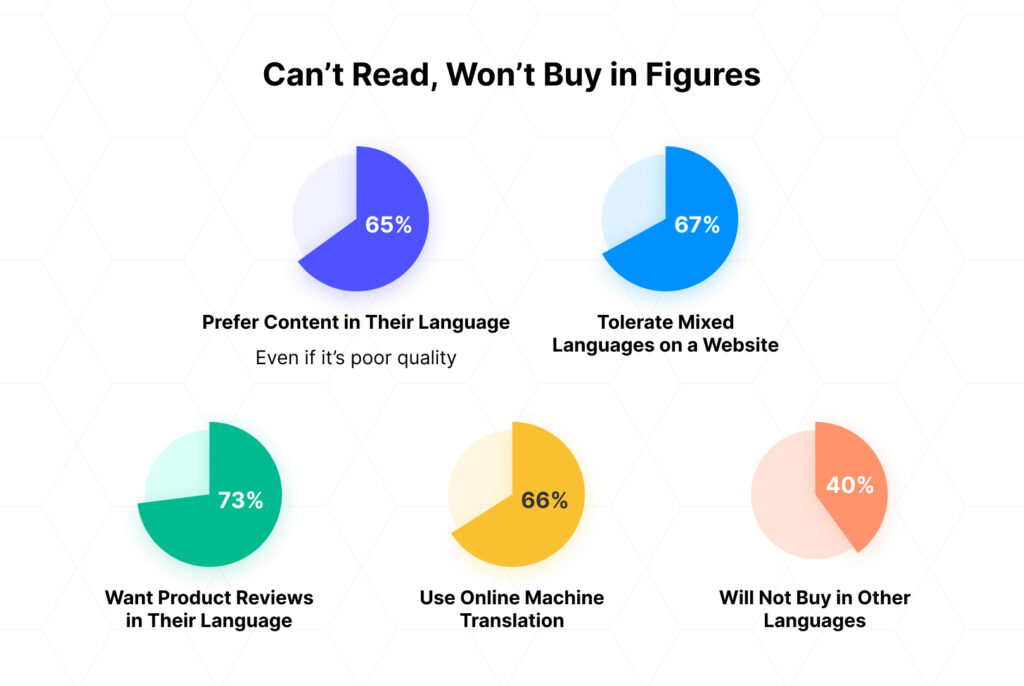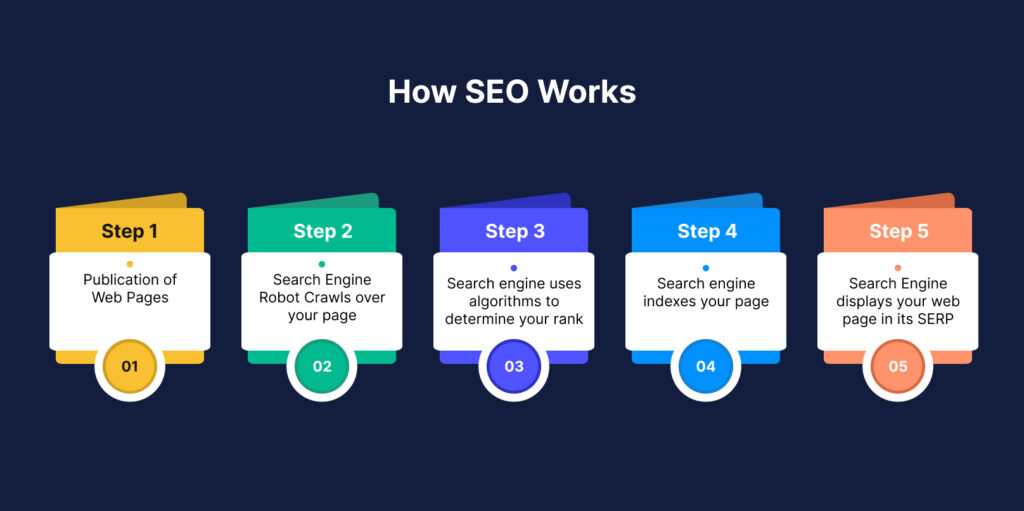Offline shops spend a lot of time and energy making their storefronts and displays as appealing as possible. Flashy front doors give the customer’s eyes a sight to catch, capturing their attention and inviting them to explore the store – the same goes for e-commerce websites.
A web page is a cutaway of the e-commerce store – the first impression it will leave in the customer’s memory. And to make a good first impression, it is vital to make international customers feel welcome to do business with you. You can achieve the effect of comfort and familiarity via localization. You’ll learn what it is, where to get it, and why you need it in this article.
Online stores play an increasingly significant role in retail. Recent reports claim that the e-commerce industry will consume more than 20 percent of global retail sales by the end of 2022. This trend is a warning sign for e-commerce business owners that the space is becoming more competitive, and they must take action to adapt to these changes.
One way to stand out is to grow the store’s reach by inviting global audiences to visit and successfully interact with it (i.e., making a purchase). In their 2020 report, Nimdzi comments, “With half of today’s e-shoppers being mobile, offering them a sub-par user experience can be calamitous to a company’s existence in the digital marketplace. The key in e-commerce is giving customers options anywhere they are.” The statistics support this claim.
76% of online shoppers are willing to spend money outside their own country. You might think it’s great news for your online store, but not so fast. Another survey shows that 40% will never buy from a website not in their native language. The 2020 Nimdzi report claims that localization drives user engagement and spending: 9 out of 10 of their respondents admit that they would be more interested in a product offered in their language.

The numbers above show a reasonable solution: translate or even localize your website for an extra bite of the global market. And in the ever-changing e-commerce field, every opportunity to get new customers matters. But how do you translate an entire website? Where to start? Let’s investigate together.
Before you start searching for a language service provider, check if your current e-commerce platform fits your localization requirements:
If you can’t answer any of these questions positively, consider switching your e-commerce platform for a more suitable one that supports the globalization of your website. A good e-commerce platform will integrate seamlessly with CMS (Content Management System), EPR (Enterprise Resource Planning), and other tools you employ in your business.
Lastly, make sure that the platform you use is secure and compliant with the global Payment Card Industry Data Security Standard (PCI). In e-commerce, the security of payments and customer personal data is a must.
In general, there are three approaches to translation:
It’s up to you to decide which approach will suit your website better. Human translators’ work is typically more expensive, while machine work is cheap but wouldn’t deliver the best quality. Depending on your needs, you can employ multiple approaches. For example, use human translation for product descriptions, where it is important to convey information to a customer, and use machine engines to automatically translate customer reviews of your goods or services.
Search Engine Optimization (SEO) is a set of practices designed to make your website better for search engines. It improves the positioning of your web pages in organic search results (the unpaid listings on the search engine result page). Organic search results positioning is based on decisions of the engine’s algorithms. SEO experts implement search marketing strategies to earn a higher position in listings. With that, SEO makes the website more visible to the customers, increasing sales as a result of a bigger customer flow.

Naturally, if your website is optimized in one language, it won’t work in another. In this scenario, you’d have to employ international SEO and update keywords to match target countries’ search queries. Keep in mind that simply translating keywords is a bad idea. You have to use a locally preferred search engine and help from a local SEO expert (or at least a language expert).
Localization is drastically different from translation. In translation, one simply has to properly transform materials from the source to the target language. Localization experts have to apply a multitude of skills that may not even be related to language, like knowledge of the target audience’s culture and traditions and ways to implement these into localized materials.
To define these differences in layman’s terms, translation relays the material from one language to another, while the localization process is providing seamless, culturally adapted immersion for a foreign customer. By eliminating the cultural barrier, localization makes your clients feel included, comfortable, and cared for in the brand, which adds points to your brand’s image.
Localization doesn’t stop at written materials. You might also change your imagery, website layout, and design in the localization process. The expert will advise on the proper color palette and features that would make the most sense for the customers. This process is complex, but in the end, the website will become a wonderful customer experience, attracting your target market in a subtle way.
Entering a new market, you would have to change a lot about your website, and tailoring prices for a new market is yet another crucial change. Here’s a tip for improving your pricing system: round the numbers. Numbers that aren’t rounded feel unnatural to customers and might make them suspicious that the prices were simply converted based on currency exchanges. Better than rounding the numbers would be to research the prices on the local market and price your goods/services competitively.
Another thing to consider is your choice of payment system. Among commonly used systems such as PayPal, be sure to implement a system that is widely-used locally – this way, you can easily gain the trust of your new customers.
Localizing the website alone is not enough – you have to dig a little deeper. Acquaint yourself with local laws and regulations. Explore and implement local privacy, liability and return policies. You might even want to employ an in-country legal expert to ensure your website becomes compliant with the local law.
Online buyers will always have problems and questions, and it is your responsibility to provide them with great customer support in their native language. Whether through chat, FAQ, a support line, or a chatbot, you will have to localize every way a customer can reach you. A language service provider might help you implement translation connectors that make multilingual support possible.
Customers enjoy interacting with a brand outside the “provider – receiver” relationship. To encourage clients’ involvement with your website, create locale-specific content, like surveys based on location and tips related to your product/service that are relevant to the target country. Collect customer feedback and improve from it, ensuring the best user experience and gaining loyal clients for your brand.
Are you considering localization for your e-commerce website but unsure where to start? Contact us at [email protected] for a quote. The Palex team has successfully localized websites for various fields of business for more than 20 years. Our skill and experience will deliver high-quality customer experiences for your multilingual audience.





